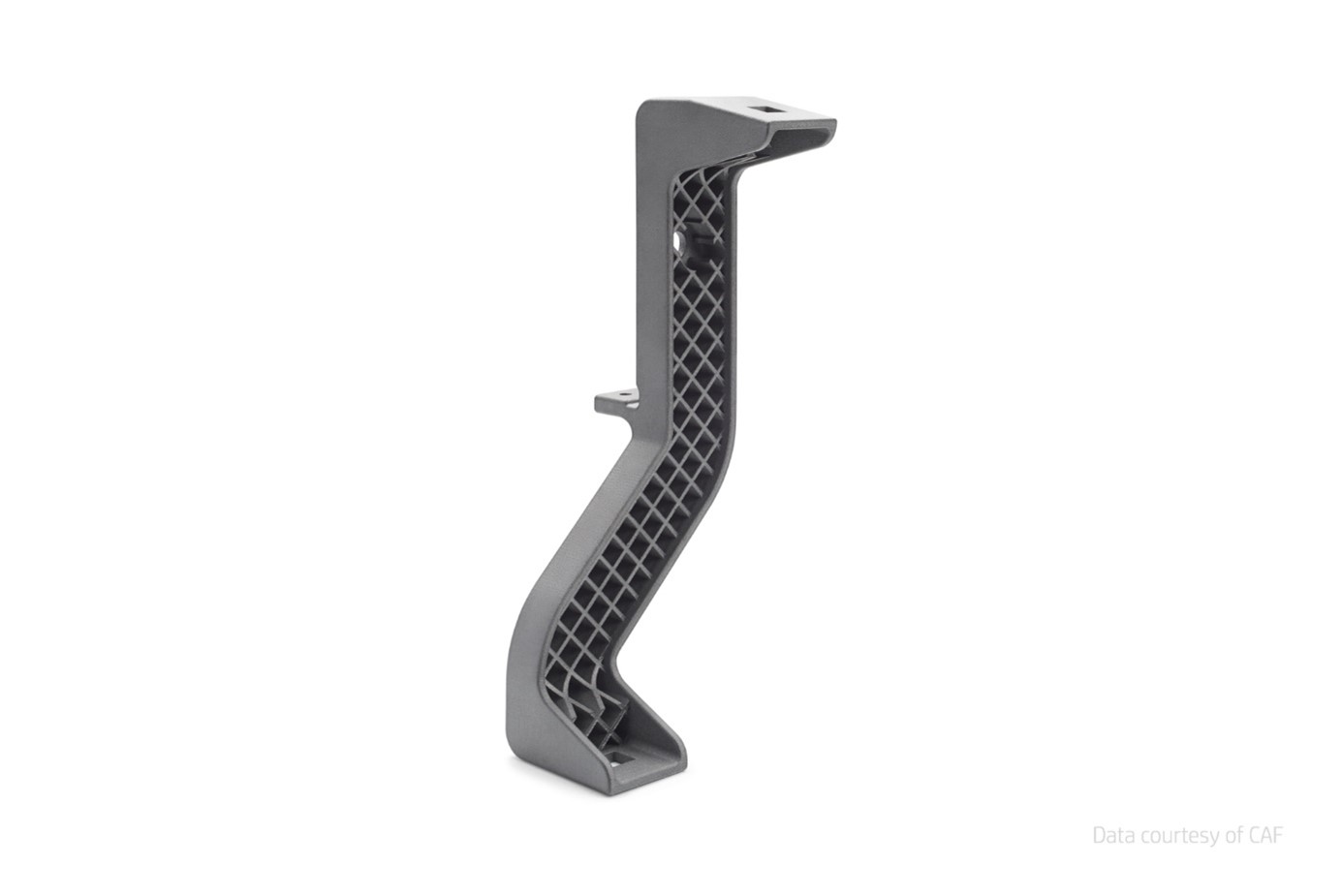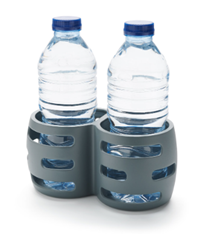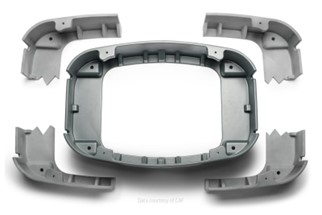Train door support from MJF
CAF decided to step out of standard manufacturing methods and identified parts that could be manufactured using incremental technology. One of these was a lever support for a train door. Previously, these types of parts were made using standard methods – in a CNC machine tool. The beginnings of the project were not straightforward, as it turned out that the first geometry proposed, was not strong enough to carry the required loads. However, the subsequent design produced using MJF technology proved robust enough. Replacing these parts reduced the costs associated with production and accelerated it.

Figure 1 Example of a train door support structure manufactured using MJF technology
Better bottle holders from Jet Fusion
Similarly, the previously mentioned company succeeded in replacing the costly heavy metal bottle holders used until now. They designed a different solution and implemented it. The holders, designed in this way, are also manufactured using Multi Jet Fusion technology from HP. In this case, too, this allowed a significant reduction in production costs.

Figure 2 Bottle holders for trains manufactured using MJF technology
Eurobaliza and Multi Jet Fusion from HP
The European Train Control System (ETCS) is the EU’s signalling and control system for rail traffic. It replaces various safety systems that are incompatible between countries. The aim of this project is to equip trains with automatic systems that are able to stop or slow down a train if a human fails. The system constantly collects data on the state of the railway with the help of electromagnetic signals. The antenna covers for the system, also known as Eurobaliza, were manufactured using Multi Jet Fusion technology from HP. The antenna, along with the printed cover, is also used in other railway control systems. The first 3D-printed antenna is a prototype and is to be installed on a test train in Saudi Arabia.

Figure 3 Prototype of a Eurobalise shield made using MJF technology
Eng Karolina Wilińska

